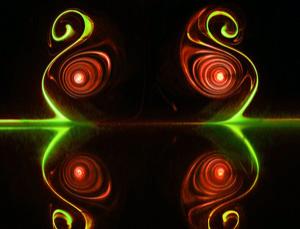LATEST HEADLINES
Superconductors can come in from the cold
IN BRIEF: 17:10 26 November 2009 | 7 comments
Calculations suggest that a wire can be an electrical superconductor even if some sections are at room temperature
IN BRIEF: 17:10 26 November 2009 | 7 comments
Calculations suggest that a wire can be an electrical superconductor even if some sections are at room temperature

Beautiful images from experiments in fluid dynamics, as exhibited by physicists at a meeting in Minnesota this week
ADVERTISEMENT
Umbrella or sunscreen? Flood or drought? The secret of flawless weather forecasting turns out to be surprisingly simple
10:43 29 October 2009
An earthquake could release a fatal dose of radiation from Los Alamos National Laboratory in New Mexico, a nuclear safety watchdog has warned
18:55 13 October 2009
The Higgs boson might be somehow travelling back in time from the future to prevent its own discovery, or so say two physicists anyway

For exclusive news and expert analysis every week subscribe to New Scientist print Edition
ADVERTISEMENT
We are partnered with Approved Index. Visit the site to get free quotes from website designers and a range of web, IT and marketing services in the UK.